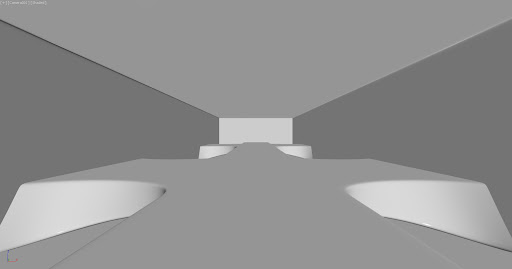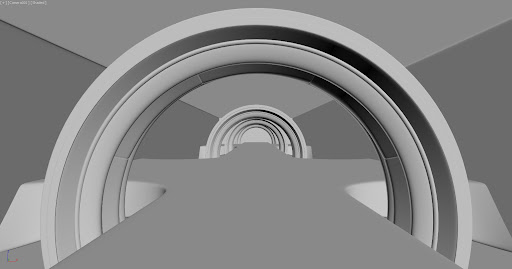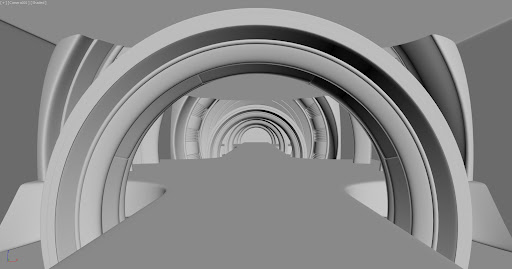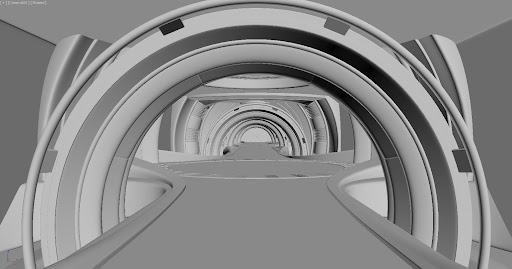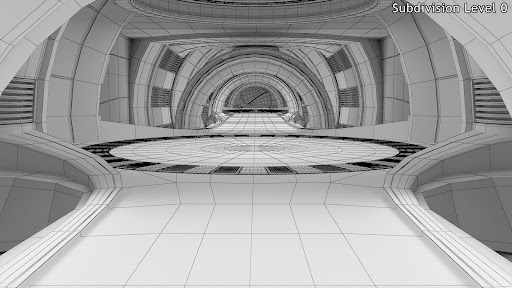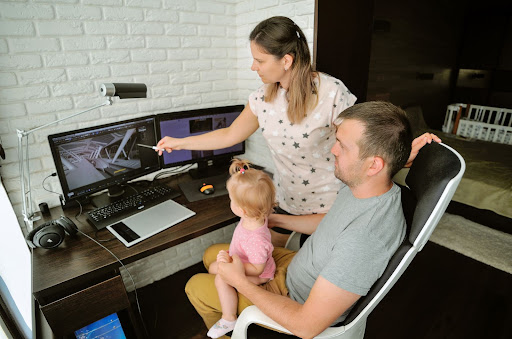Want to be inspired? Meet Ukrainian artist, Alexander Kravets. In 2010, he worked as a physicist and teacher before falling in love with 3D. By 2015, he’d become a successful 3D games artist. After working at studios across the country, today Alexander continues to create his stunning sci-fi designs — even while in the midst of war. We caught up with him below to learn more.
TurboSquid: What inspired you to change your career from physics to 3D?
Alexander Kravets: Honestly, I thought it would be really cool to be a part of a team that changes how audiences feel when playing a game or watching a film. In 2010, I managed to get into a game development studio for the first time, and feel incredibly proud that I’m working with professionals and getting my first game project out into the world! I soaked up all the knowledge from my mentors to use in new projects and new studios like a sponge.
Before long though, I began to feel the need to implement my ideas separately from the cramped confines of project management. That’s when I heard about TurboSquid. It’s a godsend for creative people and those who want to create freely, without the constraints of corporations. You just put up anything you want for sale, anytime you want. Any of your models can get into a huge number of projects around the world. That was exactly what I was going for!
What does a typical day of work look like for you?
My normal workday has changed since February 24, 2022 (the date of the invasion of Ukraine by Russian troops and the beginning of a full-scale, brutal war against the Ukrainian people).
Instead of the usual cup of coffee, my morning begins with sirens and news bulletins. I need to make sure that the region in which I and my family are located is relatively safe.
In such harsh times, one rethinks the values of life. You try to spend more time with your family and your parents. Instead of the usual 8-14 hour work day, I started to allocate 2-4 hours a day for creativity. Fortunately, TurboSquid gives me that opportunity. It’s enough to financially provide for the necessities of life. I gave up most social media in favor of a more efficient pastime and added more sports to my daily life. Evening bike rides are great for clearing my mind — that’s where new design ideas for future 3D models come from.
I believe that every challenge in life gives us a chance to come out of it even better and more perfect than we were before. For example, a great discovery for me was the understanding that to work a lot – does not mean being productive. Now I can fit the productivity of an 8-hour peacetime workday into four hours.
Could you describe the workflow behind your favorite TurboSquid creation?
One of my favorite creations is the Sci-Fi Futuristic Corridor. This is one of the few projects I worked on where I didn’t use too many references as I already had a strong idea of the result I wanted.
To make the corridor, first I blocked out the space, shape and pathway required:
Next, I built the arches:
Then I filled in the empty space in the room with interesting shapes:
At this point, I added large, medium, and small detailing to make the space look more real:
I then added materials and lighting. This was essential to accentuate the volume of the scene and highlight the pathway.
My final step involved checking the quality of my wireframe.
And making some renders to prepare the model for uploading to TurboSquid.
What tools/software did you use to create this piece?
To create this model, I used the technique of building a mesh from a single polygon. In other words, I was complicating a primitive shape (cube, cylinder).
This approach helps control the mesh of the model (as it involves excluding poles and polygons). I don’t use Boolean and NURBS at all in my work as it involves too much work to clean the mesh when converting to edit poly.
To do this I used 3ds Max without any third-party programs. Most of my time is spent on finding good shapes. I set myself the task of getting away from straight lines as much as possible. This can take about 30-40 hours. But after getting the desired result, the shapes can be used in many other projects, kind of like Lego pieces.
Everything involved in making the corridor, from throwing shapes into the scene to the final render, took me about 20 hours. The resulting number of polygons in the scene was 198,488 polys (229,126 vertices).
What advice would you give to new artists who aspire to get to your level?
I would advise a few things to aspiring artists. First of all, ask people who are not in the industry what their opinion on your work is — after all, a lot of the time people who aren’t in the industry are your intended audience. My wife and little daughter help me with this.
Secondly, take 15 minutes every day to look at the work of professional artists. Pay attention to detail. Analyze the composition, form, and light in their work. This fills your brain with solutions that you can use in your own work. Creating something new is the processing of such solutions in your brain.
Third, remember your work is valuable. All too often, aspiring artists feel insecure about the quality of their models and price them too low. This is bad for self-esteem and it’s bad for the 3D model market in general. TurboSquid’s SquidGuild can help with this. Getting a model quality certificate is a very useful tool for the aspiring 3D stocker. Also, model quality inspectors could recommend increasing the price of the product if your price was too low.
What’s your favorite hack/trick/tip that makes you feel like a 3D superhero?
The most useful discovery for me was the idea of using elements of existing products to create new models. From a single car model, for instance, I can use the wheels, interior seats, doors, car body to form part of seven new models:
What is most exciting about the 3D industry’s future in the metaverse era?
Probably that as we all want to immerse ourselves in the digital world of the metaverse, huge opportunities for 3D artists will open up. The tools to create 3D content will improve as well. 3D artists will become magicians. They will build a new digital reality around them using hand gestures, or the power of their thoughts. It sounds more interesting than life in the real world! The question is, are you ready for that change?
If you’re an artist who is interested in being featured on the TurboSquid blog, email our content team at marketing@turbosquid.com.




